Galina Babickaja passed away November 9. She was born in 1937.
The Social Programs Department of the Lithuanian Jewish Community send their deepest condolences to her husband and daughter on our shared loss.
Galina Babickaja passed away November 9. She was born in 1937.
The Social Programs Department of the Lithuanian Jewish Community send their deepest condolences to her husband and daughter on our shared loss.
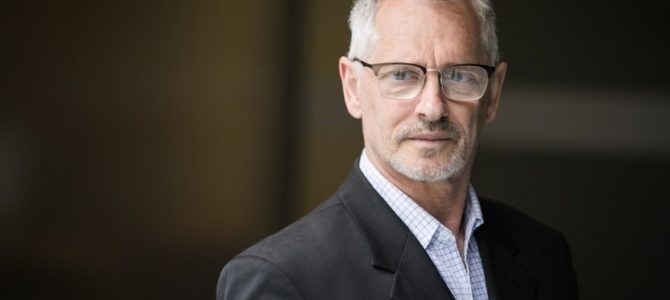
Valiušaitis’s article “Melo voratinklyje – antinacistinė ir antisovietinė rezistencija” [“In the Web of Lies: The Anti-Nazi and Anti-Soviet Resistance”] examines the art of Soviet disinformation. A truly necessary topic. But again, “including” captain Jonas Noreika, and again arguing as if there are no documents demonstrating Noreika’s Nazi collaboration, his violation of his oath as a military officer and his close cooperation with the murderers of Jews.
Unfortunately such proof exists, whether Valiušaitis likes it or not. So, in denying the established facts, trampling upon the principles of morality and ethics and human values, he seeks to push the worship of a tainted hero onto democratic society. Whether this is intentional or not, he is demanding the justification of fascist and Nazi ideology. But glorification and justification of these ideologies is forbidden by Lithuanian law.
A half-lie isn’t the truth. Using one historian as a source is not an indication of objectivity. Besides the Soviet sources, there are a plethora of others, just as there are many works by historians unaffected by Soviet disinformation. The rejection of the International Criminal Court’s definition of genocide doesn’t vindicate the crime. Proponents of Nazi ideology cannot claim to be anti-Nazis. During World War II, the “anti-Nazi underground” of the fascist Lithuanian nationalist parties, the LAF and LNP, was so unremarkable in Lithuania that they failed to rescue even a single Jew and failed to kill even a single Nazi. And attempting to whiten the mantle of an officer by presenting, for example, Pope Pius XII’s “silent” policy of rescuing Jews, does a disservice to the Pope. Not only did Noreika fail to rescue a single Lithuanian Jew, but he was responsible for one and a half years for the looting of the property of the Jews murdered and shook hands daily with the murderers of the Jews.
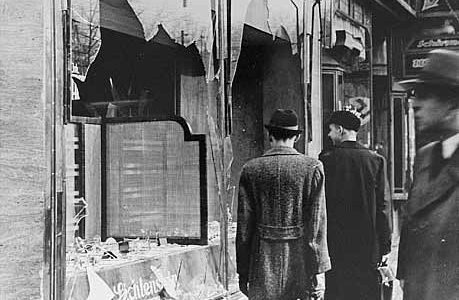
Today marks 80 years since Kristallnacht, the Night of Broken Glass when Nazis in Germany, Austria and the Sudetenland went on an organized rampage murdering Jews and looting, burning and destroying Jewish businesses and synagogues. The pogrom of unprecedented scale was supposed to leave shattered glass in streets around the Third Reich, like crystals, and the staged event even had an official name, Reichskristallnacht. For many Jews and Germans it marked the beginning of the Holocaust, with hundreds murdered, thousands wounded and many women raped by the brownshirts. In leadership circles the Nazis actually called it the Week of Broken Glass. Nazi propaganda minister Josef Goebbels issued an order on the evening of November 9, 1938, calling for “spontaneous demonstrations” to be “organized and executed” that night. Reinhard Heydrich, second in command in the SS after Himmler, was in charge of operations at the street level. The Nazis overplayed their hand and forced themselves into a corner: following Kristallnacht, insurance claims threatened to bankrupt a large number of German insurers, leading the Nazis to seek desperately for an early, financial Final Solution.
Nazi Germany’s “break-the-glass moment” led to the seizure of Jewish property and Jews who were sent to concentration camps. In just over two years the Holocaust began in Lithuania as well, where between 140,000 and 150,000 people were murdered in just three months.
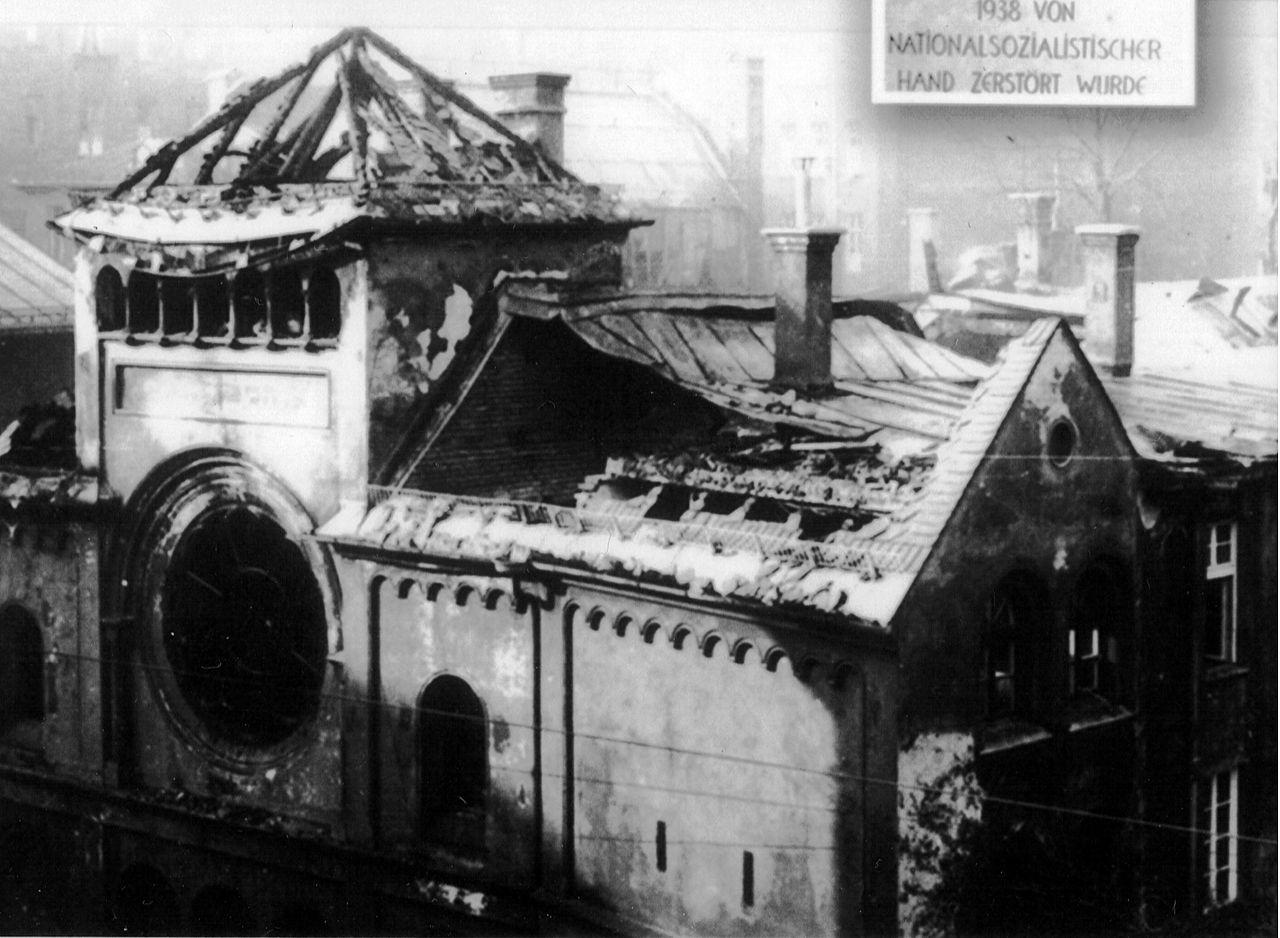
The Lithuanian Jewish Community has received a thank-you letter from Liudmila Uvanova personally thanking Social Department Family Support coordinator Rašelė Šeraitė. Liudmila Uvanova said Rašelė puts her soul into her work and is sweet. polite, attentive and open-hearted. She said all the clients are lucky to have such a person on their side, and also thanked the Lithuanian Jewish Community for real help to people in need.
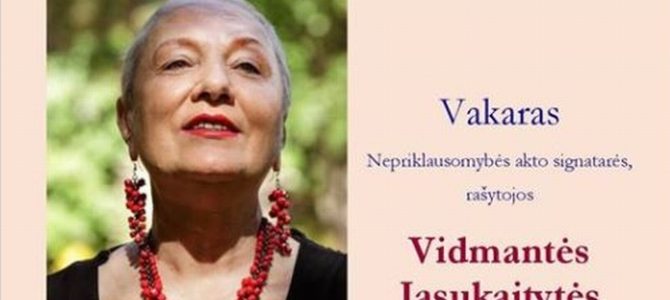
The Lithuanian Writers Union is holding a birthday party for the late writer Vidmantė Jasukaitytė from 5:30 P.M. to 7:00 P.M. on Thursday, November 8, 2018. The event will be held at the Writers Club located at K. Sirvydo street no. 6 in Vilnius and is open and free to the public. The program includes a reading of Jasukaitytė’s “The Sixth Commandmant: Thou Shalt Not Kill. Subačiaus Street. The Ghetto” based on her experience living at the former HKP Nazi labor camp in Vilnius, set to music and performed by Arkadijus Gotesmanas on percussion and Dimitrijus Golovanovas on piano. Jasukaitytė’s daughter Kunigunda, an artist in her own right, and a number of notable Lithuanian writers and poets are to attend and speak.
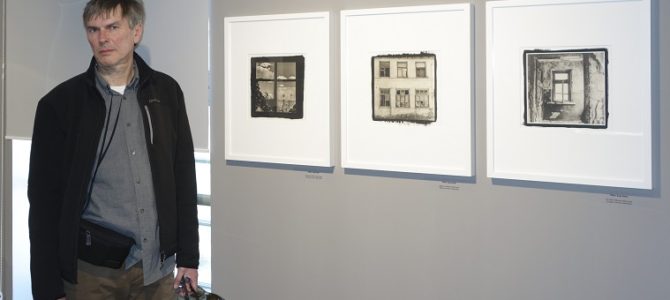
by Vilijus Žagrakalys (pictured above)
Renaissance, an exhibition of photographs at the Pakruojis synagogue from November 10 to 30, 2018, with the opening at 5:00 P.M. on November 9.
Everything that’s old comes back around. The 19th century was the period when photography began and flourished. The application of various techniques for forming an image on a plate progressed from wet-plate collodion to silver compound gelatin which dominated until the advent of digital cameras. The silver process gave rise to a surge in photography studios which captured portraits of their time in single and group portraiture. All sorts of visual photo albums were made. Silver gelatin emulsion was relatively easy to get and made this possible.
At around the same time the platinum method was discovered, dated at 1873 in the history of photography. William Willis patented the method in 1881. He received official awards for this in Great Britain in 1885. The method was popular until World War I, when platinum acquired greater value, and the technique gradually dropped out of use.
Around 1970 the technique was revived in the USA. It is now known as the king of the printing process.
When I began to get interested in photography techniques, I attempted to print several photographs. After much experimentation I seized upon the platinum/palladium method. The fragments of photographs in this exhibition were printed using this method.
Emilija Dadurkevičienė (Sudvajūtė), born in Sudvajai village in the Alytus district in 1930, is searching for Dora Gershanovitch Kustanovitch, with whom she was imprisoned at a gulag during the Stalin era. In 1961 both women were moved to a gulag in Mordovia.
Fellow inmate Ira Verblovskaya recalled more about Dora in her memoirs:
“In the same construction brigade there was Dora Gershanovitch, from a repatriated family who had returned from America to ‘victorious socialism,’ working towards a new life. How could the family who had left the Ukraine in 1918 fleeing the pogroms live in a foreign country when such great events were taking place at home? People such as Dora’s father were needed as specialists in Moscow, where the family lived safely for several years. In 1937 her father and mother were arrested and shot.
“Dora was left on her own. She had relatives in the Baltic states so when the opportunity arose in 1940 she left for Estonia… She knew Estonian and Latvian well, and English of course as well.
“She made friends with the locals and didn’t differ in her habits from the Estonians or Lithuanians. She avoided strangers and might have appeared arrogant to others. In any event it was understood she had her own narrow circle of relatives and wasn’t prepared to expand that circle. It was only because of unexpected misfortune which overtook her and for which she gained sympathy not just from her friends that she became more open. Dora worked in the construction brigade with other strong and resilient women.
“Once she was cutting a piece of wire with an axe to make a nail and she was injured when a piece of the wire went into her eye. The eye couldn’t be saved and Dora was disabled. She was depressed to be in this state. After the war she went to Tartu where she taught English, and the first chance she got she went to America, although she was old, ill and alone. What later became of her is not known.”
If anyone knows Dora or knows of her, please write communications@lzb.lt
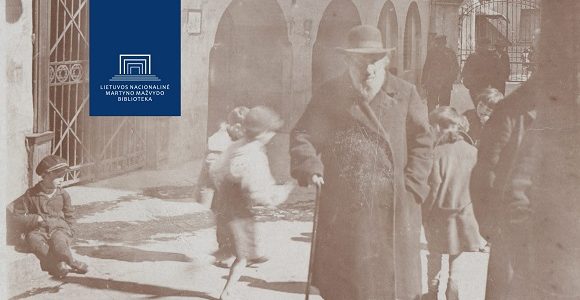
You are invited to attend the opening of the exhibit Reflections in a Broken Mirror detailing Litvak life in the period between the two world wars, in the atrium on the fifth floor at the Lithuanian National Martynas Mažvydas Library at 3:00 P.M. on November 12. Judaica Research Center director Dr. Lara Lempert will present the exhibit. After presenting the exhibit she will also talk about the work of this center and new discoveries in Jewish heritage.
Vilnius Regional Jewish Community
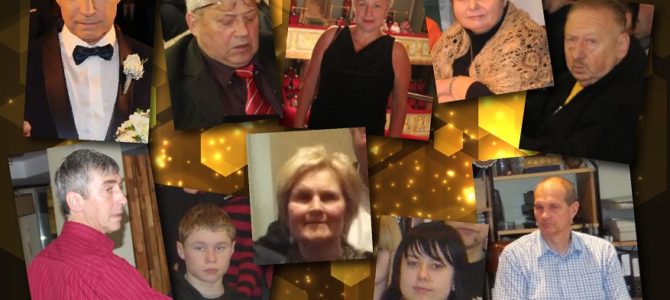
The Panevėžys Jewish Community would like to wish a happy birthday to members who recently celebrated birthdays, and held a common birthday party at the Community for Roma Marijampolskienė, Liudmila Grafman, Arnoldas Urbonas, Vidmantas Markevičius, Liudmila Šteimanienė, Leonardas Šteimanas, Rolandas Paltinas, Michailas Grafmanas, Janina Solovjova, Mantė Rimkutė and Aleksandras Košel. Panevėžys Jewish Community chairman Gennady Kofman addressed the party and wished everyone energy, health, tenacity, good emotions, many friends and a long life. He also presented the celebrants flowers and birthday cards.
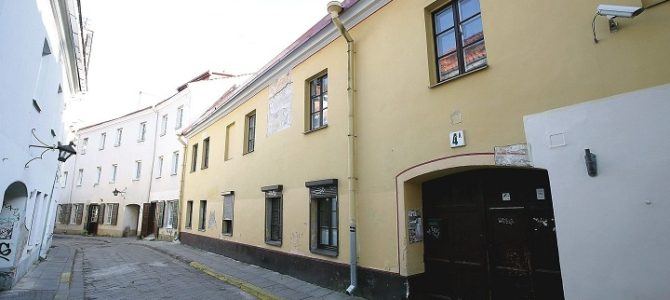
The current city government talks about the density of population in the city center, but they should look back into history when, before World War II, there were from between 200 and 500 residents living in every building on Jewish Street. The most highly-populated buildings in Vilnius. Although it’s difficult today for us to imagine a building with ten people living in every apartment, that’s how it was in the Jewish Street neighborhood. In the 19th century and the period between the two world wars, Jewish Street was the Jewish center and axis, known not just for the number of its inhabitants but also for its abundance of houses of prayer. The buildings were filled to overflowing with shops and different venues for study and entertainment.
Full article in Lithuanian here.
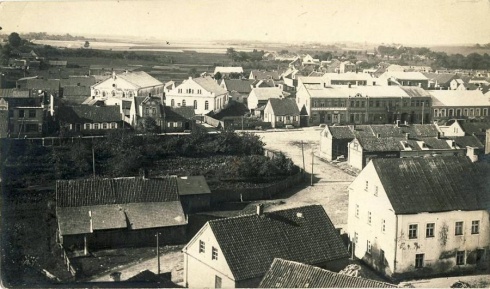
by Evaldas Balčiūnas, bernardinai lt
The history of the Žagarė ghetto is brief, terrific and painful. The ghetto didn’t have any internal Jewish council, so its history is marked by even more brutal slave labor, “restrictions” and murder of the Jews. It concludes with orders for exhumations performed by the Soviets. The Holocaust wiped out the Jewish community of Žagarė. It wasn’t just Jews from Žagarė who were imprisoned in the ghetto in 1941, but also Jews from surrounding communities such as Linkuva, Pašvitinys, Žeimelis and others. About 3,000 people were murdered at Naryškinas Park in Žagarė and another 500 Jews in Vilkiaušis Forest.
The white armbanders began the mass murder of the Jews of Žagarė before the ghetto was established. The best-known event was on a Sunday in July of 1941, when the white armbanders shot eight people at the Latvian cemetery. The Soviets sought to stress the Soviet-ness of the victims and so listed their jobs in a written finding issued after the war in 1958.
Full text in Lithuanian here.
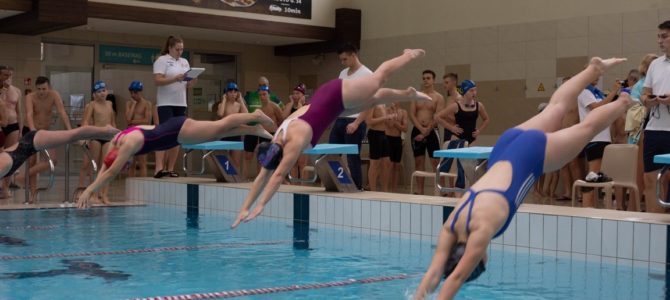
The best swimming pool in Lithuania at the Girstutis sports and recreation complex in Kaunas hosted Makabi athletic club’s autumn swim-off with competitors from Kaunas, Panevėžys, Šiauliai and Vilnius October 28. Athletes competed according to age categories. The competition consisted of 25 meters freestyle and 50 meters of breast-stroke with men’s and women’s groups.
Valentina Timofejeva and her student Erika Kolokolenkova won for both distances each in the women’s group. Albertas Savinčius from Panevėžys and Vilius Rackevičius from Vilnius won twice in the men’s. Candidates for the European Maccabiah Games are Andrej Fadeev, winner multiple times in the European and World Maccabiah, and Robert Nikitin. In the 50-meter breast-stroke, Robert beat Andrej by 0.01 seconds. Sadly Kamilė Ilijonskytė was not able to compete; in other competitions she swam a distance of 1 kilometer.
All competitors received a medal of participation and the champions were presented nice trophies. The youngest and oldest competitors, Oleksij Kokov of Vilnius and Konstantin Chružkov of Panevėžys, respectively, received special trophies as well. Athletes relaxed after the competition in the sauna and hot tub, and at lunch. Senior referee Goda Overlingaitė conducted the competition well.
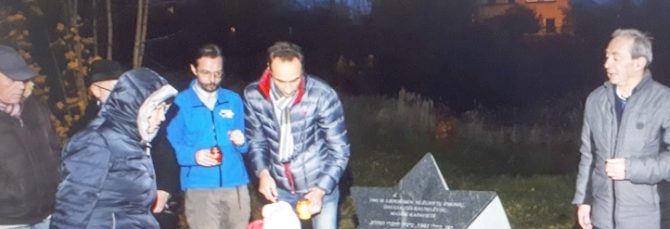
Lithuanians and Jews remembered the victims of the Holocaust at the Seventh Fort in Kaunas October 31. Kaunas Seventh Fort director Vladimiras Orlovas told the Kauno Diena newspaper said this was the only time Jewish community representatives, in this case the Kaunas Jewish Community, participate in the traditional Lithuanian holiday Vėlinės, or All Hallows’ Day, during which Lithuanian traditionally go to family cemetery plots and honor dead family members.
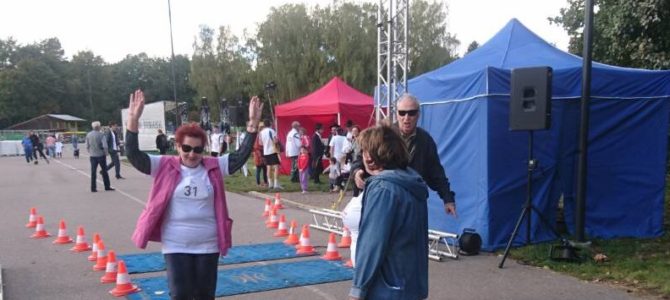
September 23 is marked as the Day of Remembrance of the Lithuanian Jewish Victims of Genocide. On that day members of the Šiauliai Regional Jewish Community gathered in the Luponiai Forest near the village of Kužiai in the Šiauliai region where over 8,000 Jews were murdered. A moment of silence was observed in memory of the victims, flowers were placed on the monument and candles lit. Speakers recalled the events of history. From there members travelled to the Šiauliai ghetto to honor the victims there as well.
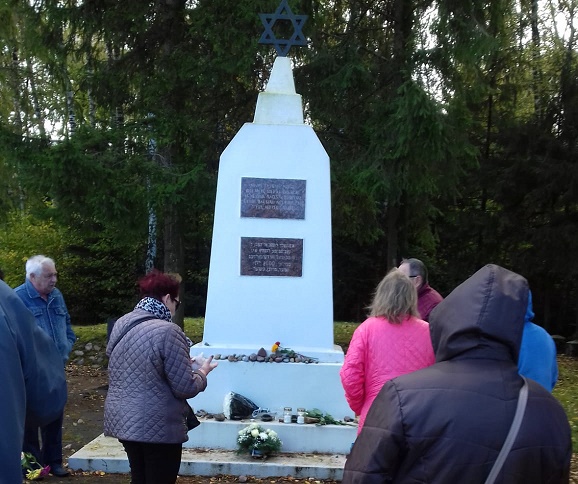
Community members also honored the victims at the Bubiai and Žagarė mass murder sites. Historical sources say two ghettos were established after the Germans entered Šiauliai. The prisoners there were murdered, some in the Luponiai Forest while others were sent to the Žagarė ghetto. Aleksandras Rabinovičius located the mass murder site in Luponiai Forest with the help of locals. The people of Šiauliai erected a commemorative obelisk and signs and built footpaths there.
On October 21 members of the Šiauliai Regional Jewish Community met Roma Mačienë, a pioneer in ecological bee-keeping. She related much new information to members about bees, bee species, that bees have five eyes and they also have a keen sense of smell. In the world of bees it’s important to have a good, strong family which is able to reproduce to insure the continuity of the line, the basis of all life. The bee-keeper called bee products a miracle of miracles. Members learned about honey but also pollen and other products produced by bees.
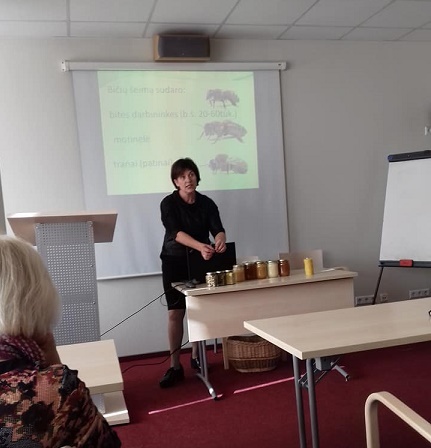
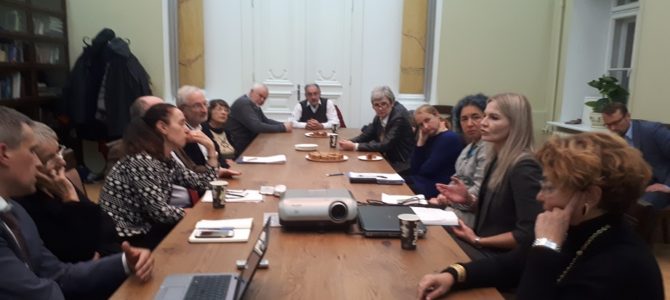
The Lithuanian Jewish Community held a discussion October 24 about Jewish heritage protection from the present till 2020, about the priority tasks and goals in the context of 2020 being named the Year of the Vilna Gaon and the Year of Litvak History. The discussion mainly focused on the former Great Synagogue in Vilnius and how to protect what remains of it.
LJC chairwoman Faina Kukliansky, members of the Community, US embassy adviser on political and economic matters Shai Moore and foreign members of the LJC’s own heritage group, including Lyudmila Sholokhova (YIVO), Assumpcio Hosta (AEPJ) and Sergey Kravtsov (Hebrew University), took part in the discussion.
Chairwoman Kukliansky reminded participants Jewish heritage is important to the Lithuanian state and everyone concerned with heritage conservation, as well as to Jews. Discussions have been going on for years about how to protect the Great Synagogue site, the LJC’s role in that process and what to do with the school there, under which archaeologists last summer unearthed a portion of the synagogue’s central bimah. The situation is complex concerning the site: the school was scheduled for demolition but this year it was leased for two years to several organizations. There is clearly a commercial interest in this special location, Kukliansky noted.
It’s difficult to find experts in Vilnius who could be asked how best to commemorate the Great Synagogue, so the arrival of the international group of heritage specialists, their participation in LJC meetings, their perspectives and discussion of these perspectives is an important event.
Neringa Latvytė-Gustaitienė, the head of the history department at the Vilna Gaon State Jewish Museum, said the Great Synagogue of Vilnius is not just a symbol belonging to Lithuania, but to all Jews of Eastern Europe. It is a priority heritage site but sadly there hasn’t been any break through in the cultural community on this issue, she added.
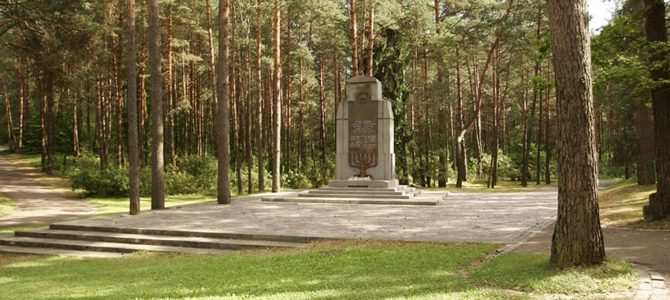
A new exhibit will be unveiled at the Ponar Memorial Complex on October 31. Ponar was a place where residents of Vilnius, including Jews, liked to go in the summer, but which became infamous as the site of the mass murder of Jews in Lithuania. The exhibit features the history of Ponar and the mass murder of Jews there. It was made by the Vilna Gaon State Jewish Museum and financed by the Chancellery of the Government of Lithuania.
Although Ponar is now synonymous with the mass murder site where Nazis and Lithuanians murdered the Jews of Vilnius and surrounding areas, before World War II the forest near Vilnius was a frequent destination for those seeking a proximate location. In 1939 the town was even named an official vacation destination. When the Soviet Union occupied Lithuania, they began to exhume more than a dozen pits for aviation fuel tanks and munitions stores there. Between 1941 and 1944 from 50,000 to 70,000 Jews were murdered there. Most were Jews from Vilnius and the surrounding region, but also included Polish resistance fighters, some Lithuanians, Soviet POWs, Roma and others.
The first monument to the victims at Ponar was erected in 1948, but was swiftly removed by Soviet authorities, and until the restoration of Lithuanian independence in 1990 the site was officially commemorated as a site where Soviet citizens were murdered by fascists. In 1991 the Ponar site was given over to the Vilna Gaon State Jewish Museum. In early 2014 a project for maintaining and updating the Ponar Memorial Complex began along with comprehensive studies of the killing field which wholly changed ideas about the site. Different new sites were located there: mass murder sites, a tunnel for prisoners, guard posts, the location of former buildings and gates. It also became clear that the mass murder territory was significantly larger than it had been thought before: it probably spanned a territory of 70 hectares.
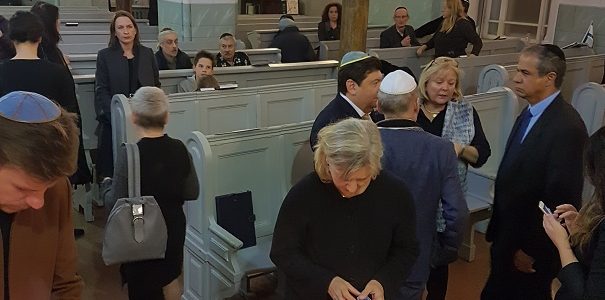
The Jews murdered in the tragedy in Pittsburgh were commemorated on Monday, October 29, at the Choral Synagogue in Vilnius, Lithuania. Lithuanian Jews expressed their solidarity with American Jews and lit candles in remembrance of the victims.
Members of the Lithuanian Government came to pay their respects along with foreign diplomats and non-Jewish members of the public as well. Lithuanian Government chancellor Deividas Matulionis, deputy Lithuanian foreign minister Darius Skusevičius and Lithuanian MP Emanuelis Zingeris attended, as did a number of ambassadors to Lithuania.
United States ambassador to Lithuania Anne Hall said: “I never though these kinds of mass murders could happen in the USA. We have to all we can so similar sorts of tragedies don’t happen.”
Israeli ambassador to Lithuania Amir Maimon and Lithuanian MP Emanuelis Zingeris spoke about unacceptable anti-Semitism and the ideology of hatred.
Vilnius Jewish Religious Community chairman Simas Levinas said: “It’s difficult to imagine a more horrible and cynical crime than murder committed during Sabbath prayers.”
Choral Synagogue rabbi Sholom Ber Krinsky said: “Despite the tragedy of this terrorism, we must be stronger in our faith, to follow G_d’s commandments, because over the ages religion has inculcated the eternal values in people, the universal morality of man, upon which this challenge has trampled.”
Choral Synagogue cantor Shmuel Yatom sang the prayer Merciful G_d in memory of the victims.
Dear readers,
A family with 3 children, clients of the LJC Social Department, recently had their washing machine break down, which they need very much, especially since one of the children is only three-years-old.
An anonymous donor has stepped forward for the family to buy a new washing machine. Thank you so much for the rapid response! The family still has a number of needs and if you can help, please contact family support coordinator Rashele by telephone at 8 652 13 146 or by email at rasheles@sc.lzb.lt
Thank you!
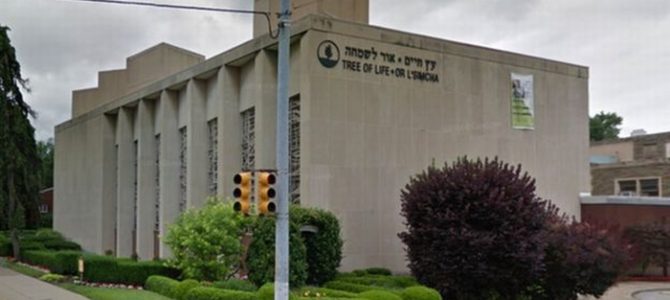
Upon hearing the horrific news of the attack in the Tree of Life synagogue in Pittsburgh, Rabbi Sacks issued the following statement:
The deadly attack inside a synagogue earlier today in Pittsburgh, Pennsylvania, has pierced the heart of Jewish communities worldwide. My thoughts and prayers go out to the families who have lost loved ones–may they be comforted among all the other mourners of Zion. I wish those injured a complete recovery, both physically and mentally, from this traumatic ordeal.
This attack, which is being reported as the deadliest attack on the Jewish community in the history of the United States, is a tragic reminder that, somehow, within living memory of the Holocaust, we still live in a world where anti-Semitism exists and deadly attacks on Jews take place.
The fact this attack happened inside a synagogue, whose name is the Tree of Life, makes it all the more horrific. The synagogue is a place where people come together, in peace, to celebrate and give thanks for all we have, above all for God’s greatest gift, life.
Today lives were lost and shattered. We are the people who were commanded by Moses to “choose life” and ever since, despite the tragedies of our history, past and present, have always striven to choose life and sanctify life. That is what the community of Pittsburgh will now do, and Jewish communities around the world will support them as they rebuild and remember the lives lost.
Text of statement here.